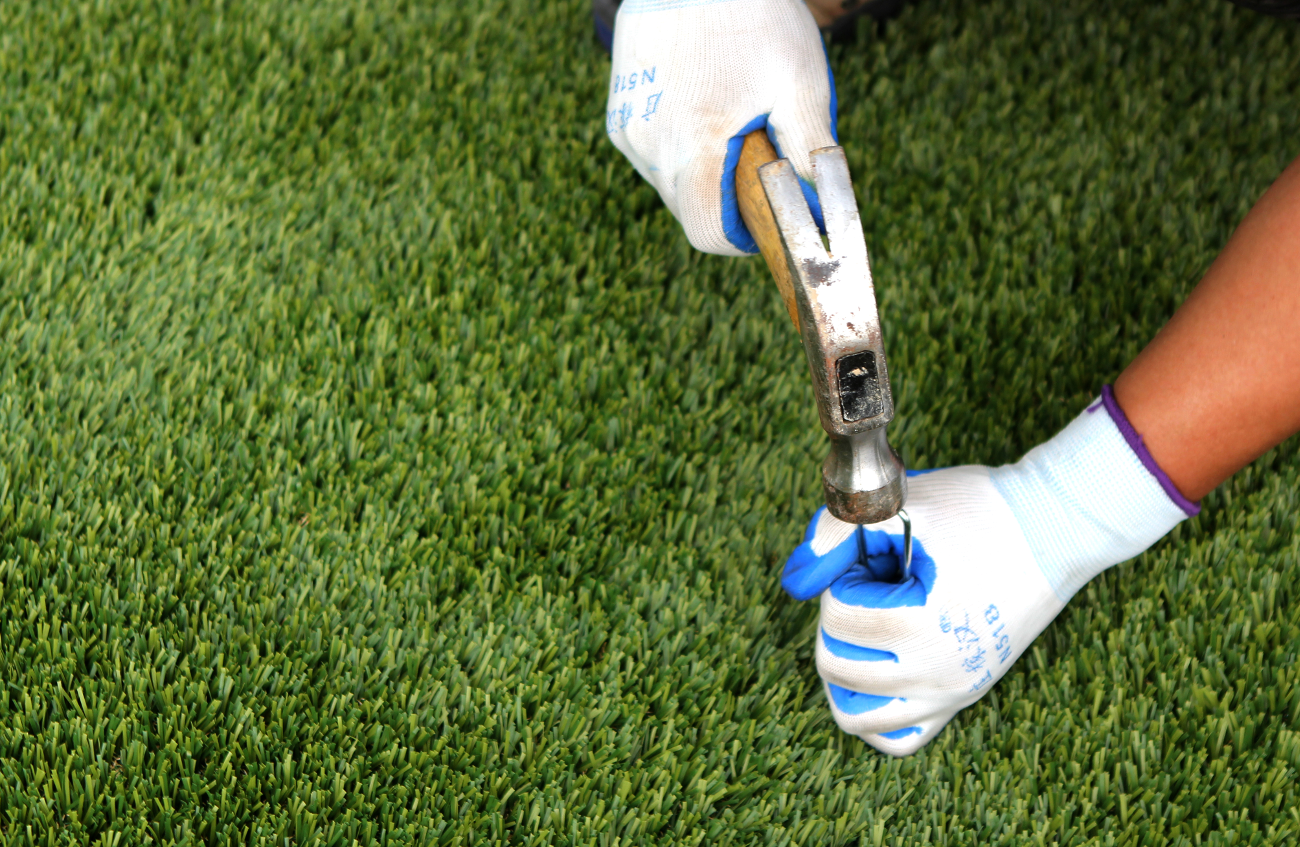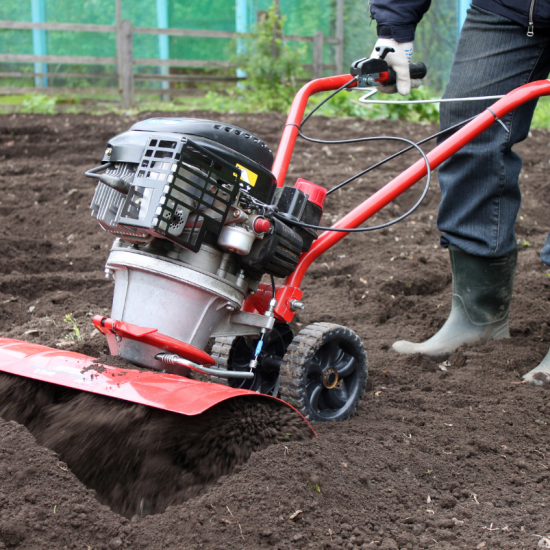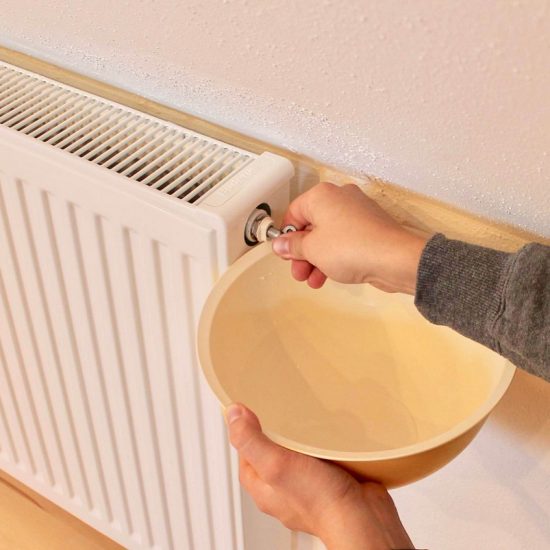How to Lay Artificial Grass
A step by step guide on how to Lay Artificial Grass including necessary tools, estimated costs, time frames, best techniques and what not to do.
An artificial lawn is something many homeowners prefer to live grass. Not only is there little to no upkeep required, but you don't have to worry about the grass dying, yellowing, or fading over time, with sunlight and weather elements. Additionally, there are several varieties of artificial turf, so you can find different grades/qualities, to produce that rich, all-natural appearance you would like to achieve for the lawn, without having to worry about the care, upkeep, and gardening work. If your considering lawn and garden work, or installing an artificial lawn, this post is a good place to get you started.
List of Required Tools
- Sod cutter
- Wheelbarrow
- Shovel
- Weed control formula
- Roller/tamper
- Lawn spikes
Step by Step Guide
A healthy, green lawn, can be hard to maintain. If you are considering installing artificial turf, this simple guide will have you on your way, and allow you to do the job in a matter of hours (depending on the size of your lawn), and naturally enriching your property's value, and improving the aesthetic appeal in no time.
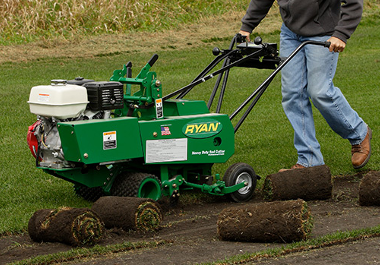
1. Remove the old lawn
You'll have to remove the old lawn before you lay down the artificial turf. A sod cutter is an invaluable tool here as it will do the job in a fraction of the time it would take to do manually. Get a shovel and wheelbarrow as well, so you can remove the clumps, and dispose of all the grass/dirt you are removing from the pitch.
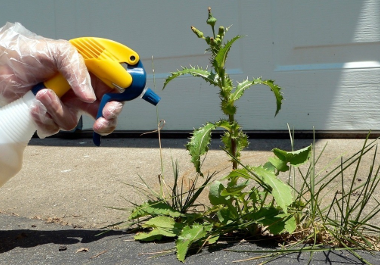
2. Optional steps
Before you can actually install the lawn, there are a few optional steps you can take. First off, if weeds are a concern, apply a weed killer solution to the ground. Not only will this prevent weeds from forming, but will kill any which are present, so you don't have to worry about them popping up through the turf.
Another task you could do is to level the ground - if this is an issue for your lawn anyway, this may be an ideal time to resolve this. Using a tamper, you can roll over the area where you are going to install the artificial turf, in order to create a smooth surface for installation. This will produce a soft, smooth base for your new lawn.
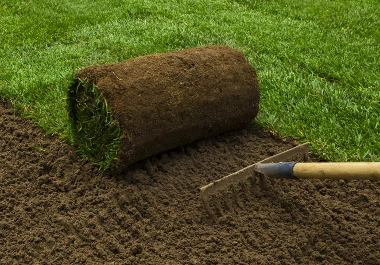
3. Unroll the lawn
You will purchase artificial turf which is rolled (similar to sod). To install it, simply begin to unroll it over the area where it is going to be installed. The amount needed will depend on the area you plan on installing the turf over in the lawn. Make sure the orientation of the turf is facing the same direction if covering a larger area, to ensure a smooth, even look, once all turf is rolled out.
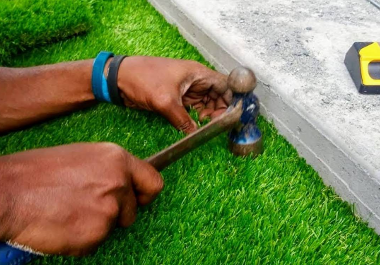
4. Nail down the lawn
Here you'll use your galvanized nails to affix the turf into position. You will simply use a hammer to get the large spikes deep into the ground's surface and make sure there aren't exposed edges. The spike should be flush/even with the ground, after inserted into the turf.
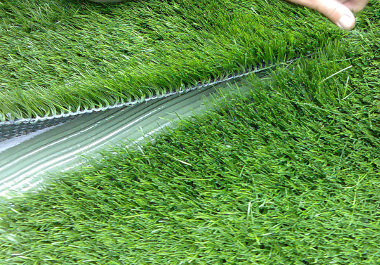
5. Spread a layer of silica
This is another optional step you can choose to follow. If you want to increase stability after nailing the turf down you can also apply a layer of silica over the grass with a spreader. This is a good way to add some weight and prevent movement or shifting of the turf.
How to Lay Artificial Grass Video
Tips & Techniques
Installing artificial turf is quite easy; as long as you have the right equipment to first remove the old grass in your yard, you shouldn't have any difficulties installing the turf. It is important, however, to have enough materials before you begin. You want to purchase the highest-quality turf to install. It not only retains form longer, it won't show signs of fading/wear, it isn't as likely to get damaged, and it is going to have more of a "natural" appearance, so it will look like real-grass.
When laying out the turf also make sure you check the orientation. Basically, when unrolling the turf, you simply want to make sure the direction is facing the same way for each sheet you roll out. This will ensure a smooth/even finish, and it won't leave any gaps or patchy areas on the turf, after it is installed.
If you choose to apply a layer of silica make sure you use a spreader. This is going to help weigh down the turf, and it is going to drive it deeper into the turf's lower levels. It is also going to take less time for you to do the job, rather than doing the spreading manually.
Am I best to hire a tradesman?
Removing the old grass/dirt might be a job you choose to hire a professional gardener for. Because you may not have the equipment, or do not have the time to do this, many homeowners will choose to hire a tradesman to remove the old lawn and garden, before they choose to install a new artificial lawn outside. This project shouldn't be too difficult or very time consuming, if you have the right equipment for the work. And, installing the turf is even easier; it is simply a matter of unrolling the grass, and leveling it onto the surface area where it is being installed.
Most homeowners can finish this DIY project in a few hours. And, if you have someone help you, it is a job you can do in about 2-4 hours (of course, depending on the size of the garden). Additionally, it isn't a very costly DIY project, so it might be one you choose to do yourself, rather than hire a tradesman to do the job.
Ultimately, if you decide to hire a tradesman, make sure you choose a specialist. They can do the work in relatively short period of time, they won't overcharge you for the work, and they'll guarantee the finishes/detail, when you hire the best tradesmen to install the new turf outside of the home.


